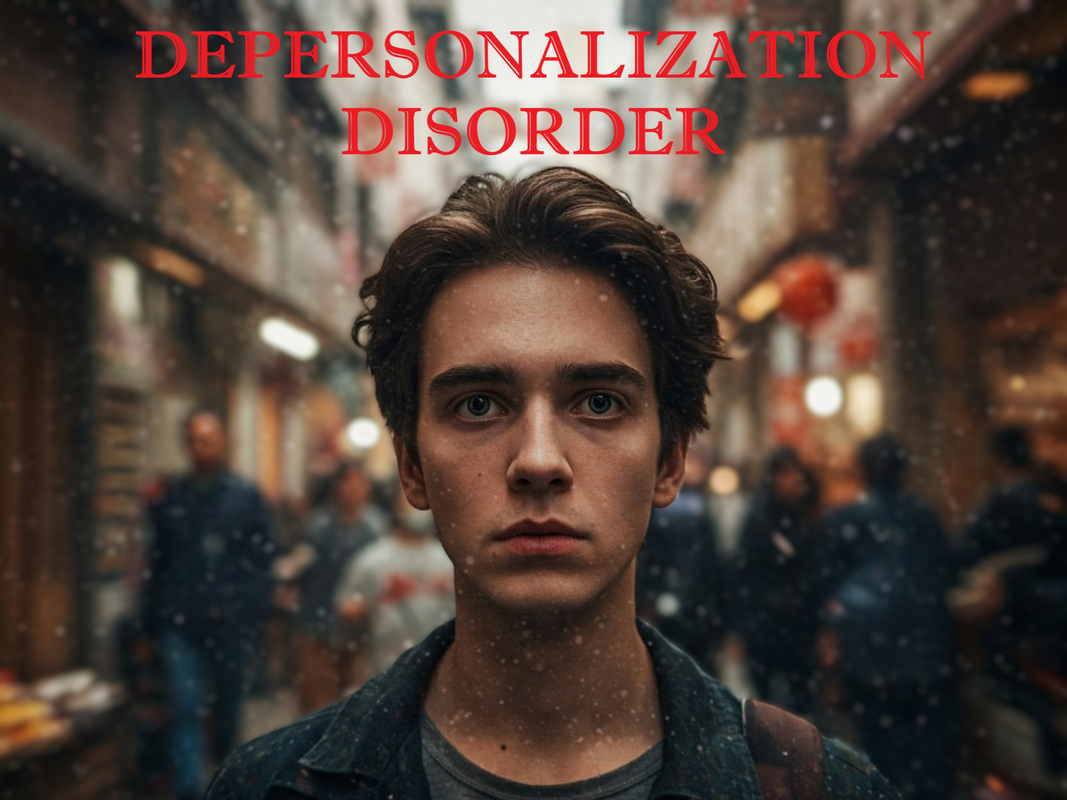Have you ever felt like you’re watching yourself from outside your body? Or that the world around you feels distant, foggy, or unreal? While occasional experiences like this can happen during extreme stress or fatigue, persistent episodes might indicate a mental health condition known as Depersonalization-Derealization Disorder (DPDR).
Depersonalization disorder is a dissociative disorder that affects how a person perceives themselves and the world. Though not widely understood, it’s a recognized mental health condition that can significantly impact daily life. Raising awareness about DPDR is important, as early intervention can make a big difference in recovery and quality of life.
Causes and Risk Factors
Scientists and mental health professionals do not yet know the exact cause of depersonalization disorder, but several biological, psychological, and environmental factors are believed to contribute. The condition is complex, and often multiple factors interact to trigger or worsen symptoms.
Commonly Recognized Causes:
Severe Stress or Trauma
Experiencing or witnessing emotional or physical trauma—such as abuse, accidents, or natural disasters—is often linked to the onset of dissociative disorders.Anxiety and Panic Disorders
Individuals with high levels of chronic anxiety or panic attacks may develop depersonalization as a psychological coping mechanism.Depression
Depersonalization-Derealization Disorder (DPDR) can occur alongside Major Depressive Disorder (MDD), making it more challenging to differentiate from other mood-related conditions.Substance Use
Certain drugs, such as cannabis, hallucinogens, or dissociatives, can induce depersonalization symptoms. In some cases, symptoms persist long after the drug wears off.Neurological Factors
Some research suggests that dysfunction in the brain areas responsible for self-awareness and perception may play a role.
Risk Factors:
A family or personal background that includes mental health conditions.
High sensitivity to stress or emotional events
Childhood neglect or emotional abuse
Certain personality traits (e.g., avoidant or obsessive tendencies)
Common Symptoms
Depersonalization-derealization disorder is marked by two main symptoms, though individuals may experience them separately or together.
1. Depersonalization
This involves a feeling of detachment from oneself. People may describe it as:
Experiencing a sense of detachment from your own thoughts or physical self
Numbness or emotional disconnection
Experiencing a feeling that your body or limbs are not connected to you, or seem unreal or misshapen.
A loss of control over speech or movements
2. Derealization
This is a sense that the world or surroundings are unreal. Symptoms include:
The environment feels foggy, dreamlike, or artificial
Objects may seem distorted in size or shape
Sounds might seem muted or overly sharp
Difficulty connecting emotionally with people or surroundings
It’s important to note that during episodes, individuals usually remain aware that these sensations are not reality, which distinguishes DPDR from psychotic disorders.
Diagnosis Methods
Receiving a diagnosis for depersonalization disorder involves a comprehensive assessment conducted by a qualified mental health expert. Since symptoms can overlap with other conditions like anxiety, depression, or neurological issues, a careful assessment is essential.
Common Diagnostic Steps:
Clinical Interview: The healthcare provider will ask about symptom history, frequency, triggers, and impact on daily life.
Psychological Questionnaires: Standardized tools may help assess dissociative symptoms.
Medical Examination: To rule out underlying physical or neurological conditions, such as seizures or brain injuries.
Substance Use Screening: To identify whether drug or alcohol use may be contributing to symptoms.
Early diagnosis can help prevent symptoms from becoming chronic and interfering with daily functioning.
Treatment Options
While depersonalization disorder can be distressing, it is treatable with a combination of medical and psychological approaches. The goal is to reduce symptom severity and improve coping strategies.
1. Psychotherapy
This is the main form of treatment for DPDR. The following therapies are commonly used:
Cognitive Behavioral Therapy (CBT)
Helps identify and challenge distorted thinking patterns and reduce avoidance behaviors.Psychodynamic Therapy
Focuses on unresolved emotional conflicts or past trauma that may be causing dissociation.Trauma-Informed Therapy
For individuals with a history of trauma, therapies like EMDR (Eye Movement Desensitization and Reprocessing) may be helpful.
2. Medication
There is no medication specifically approved for DPDR, but doctors may prescribe medications to address underlying conditions:
Antidepressants (such as SSRIs) for co-occurring depression or anxiety
Anxiolytics in short-term cases of extreme anxiety (used cautiously)
Mood stabilizers in rare cases with severe emotional instability
Medication alone is usually not sufficient but can support psychotherapy.
3. Lifestyle Approaches
While not a cure, healthy habits can significantly improve symptom management:
Regular exercise to boost mood and reduce stress
Sleep hygiene for cognitive clarity and emotional regulation
Balanced diet to support brain and body health
Prevention and Management Tips
Though depersonalization disorder isn’t always preventable, especially in cases of trauma, certain strategies can reduce risk or help manage symptoms.
Practical Tips:
Avoid substance use, especially drugs known to trigger dissociation
Practice daily mindfulness, even when not experiencing symptoms
Establish a routine, which can provide structure and a sense of normalcy
Build a support system of trusted friends, family, or peer groups
Limit screen time, especially exposure to overstimulating media
Seek therapy early if you're going through intense stress or trauma
When to See a Doctor
Feeling detached occasionally is not uncommon, but if these sensations:
Persist for weeks or months
Interfere with work, school, or relationships
Cause emotional distress
Occur alongside other mental health symptoms
It’s important to seek professional help. Early diagnosis and treatment can prevent the disorder from worsening and improve long-term outcomes.
For support and mental health resources, consider visiting professional organizations or licensed clinics dedicated to psychological care.
For more mental health education and support, visit Mindzo.
Disclaimer
This article provides general information and isn't a substitute for professional medical guidance, diagnosis, or treatment. For any medical concerns, always seek advice from your doctor or a qualified mental health professional.

Comments
Post a Comment